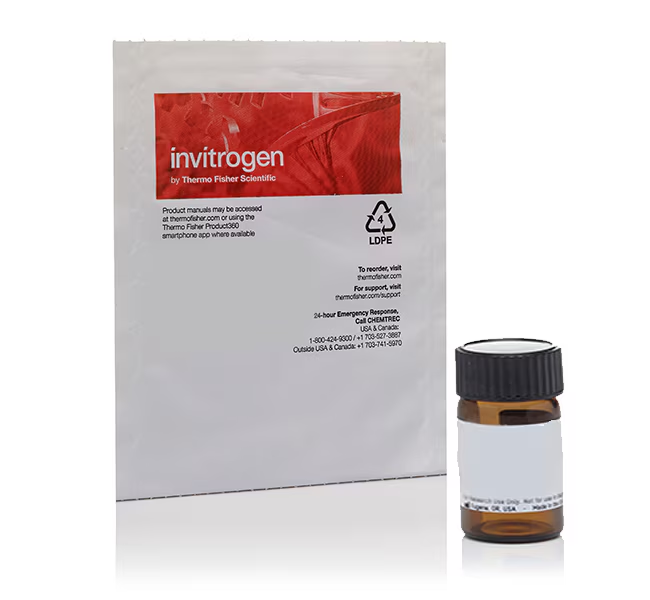
The ATP-dependent oxidation of luciferin by luciferase produces light, and this system is employed as a reporter in plants, bacteria, and mammalian cells. Because chemiluminescent techniques are virtually background-free, this reporter gene system is ideal for detecting low-level gene expression.
Molecular Probes™ highly purified synthetic luciferin exhibits physical properties identical to those of natural luciferin. We offer the luciferin free acid (L2911), as well as its water-soluble sodium and potassium salts (L2912, L2916). Our DMNPE-caged D-luciferin (L7085) offers an efficient way to deliver luciferin into intact cells and can be used to supply a continuous source of active luciferin. DMNPE-caged luciferin readily crosses cell membranes. Once inside the cell, a pulse of luciferin can be released by UV photolysis, or a continuous supply of active luciferin can be slowly formed by the action of intracellular esterases found in most eukaryotic cells.
Luciferase Specifications:
• Chemiluminescent after oxidation by luciferase
• Luciferin potassium salt is readily soluble in aqueous buffers
Find More Fluorogenic and Photoactivatable Probes
We offer a number of fluorogenic substrates, photoactivatable probes, and caged probes. Review Substrates for Microsomal Dealkylases, Acetyltransferases, Luciferases and Other Enzymes—Section 10.6 and Photoactivatable Reagents, Including Photoreactive Crosslinkers and Caged Probes—Section 5.3 in the Molecular Probes™ Handbook for more information on these products.
For Research Use. Not for human or animal therapeutic or diagnostic use.
| Code | Description |
|---|---|
| L2916 | Catalog Number: L2916 |

